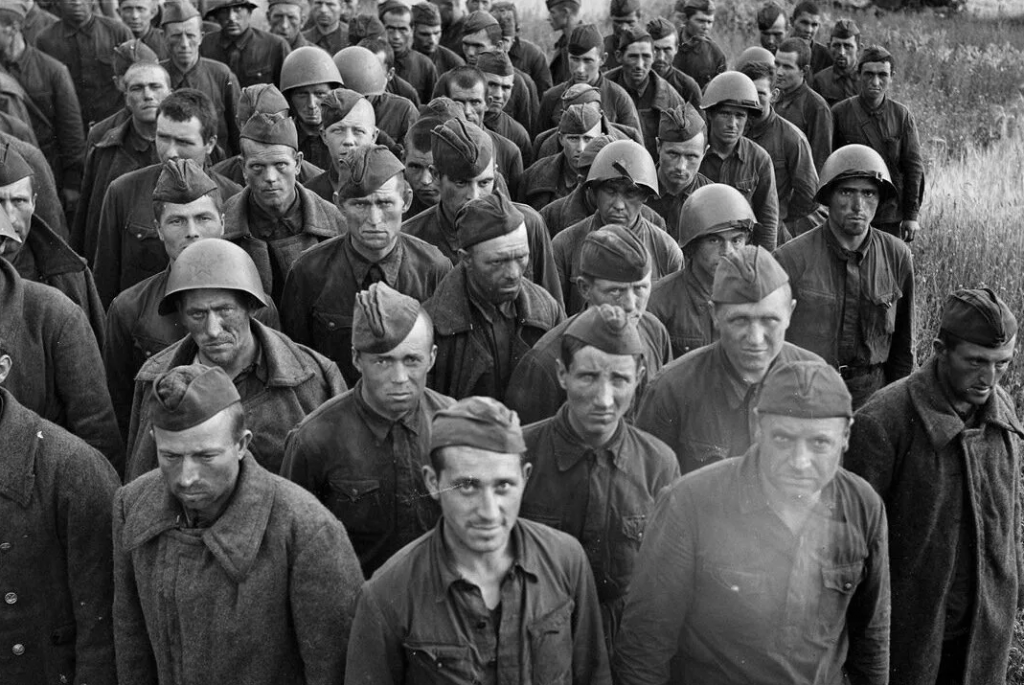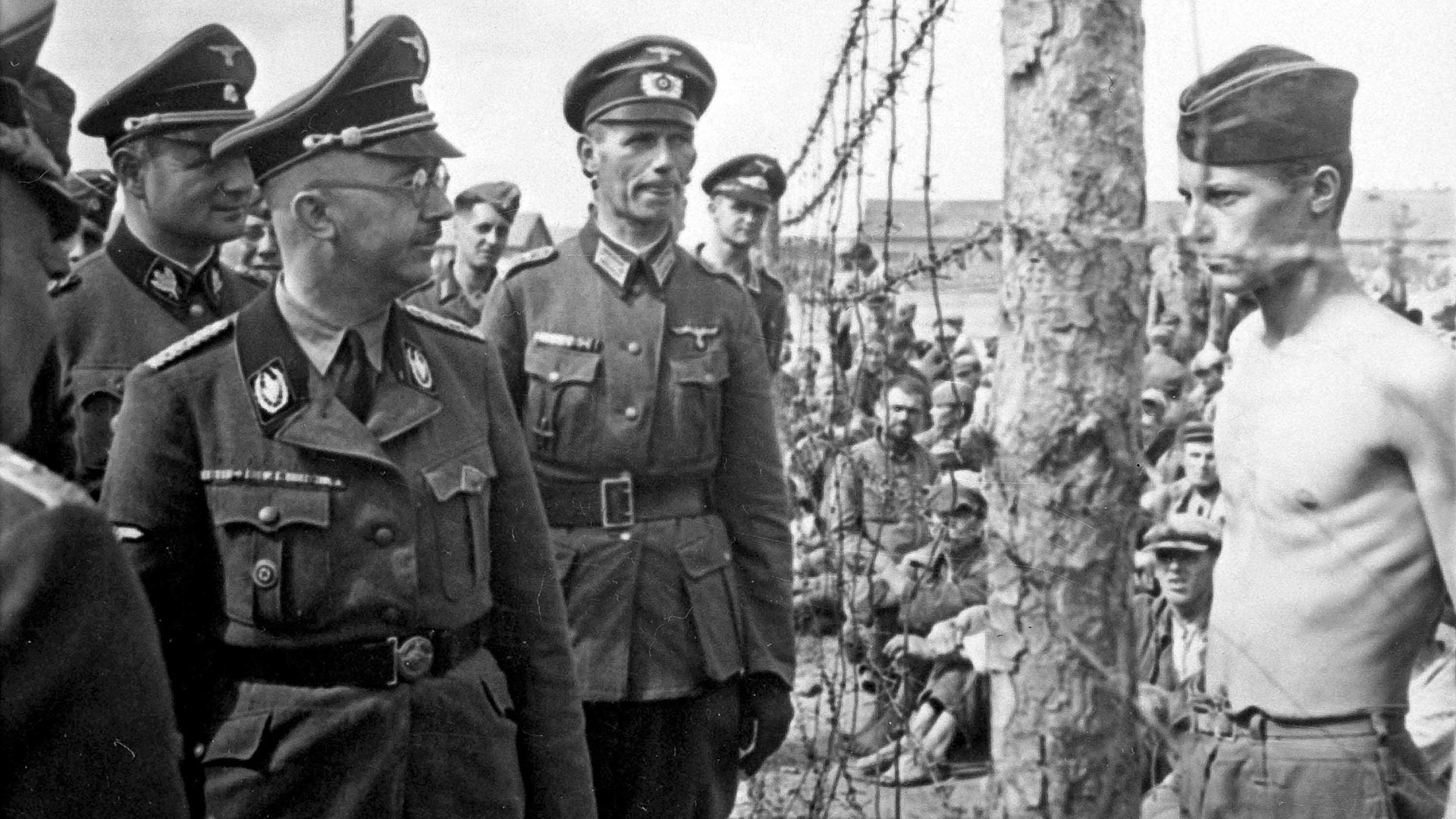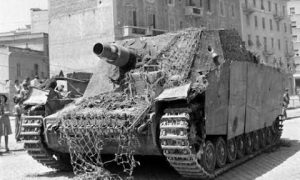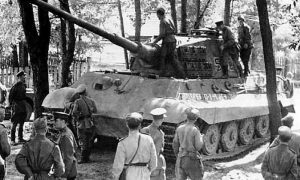WW2 Soviet Pow Captivity conditions and mortality
Soviet prisoners of war during the Great Patriotic War – a category of servicemen of the army of the Soviet Union, voluntarily or forcibly captured by the Nazi army or the troops of Germany’s allies during the Great Patriotic War.
Soviet soldiers taken prisoner by the Germans became the first victims of the planned extermination of most of the “Slavic subhumans.” Millions of prisoners of war died in the first 6-8 months of the war. Even the gas death of Jews was initially tested on Soviet prisoners.
The harsh conditions of detention of Soviet prisoners of war were caused by the ideological rejection of communism and the slavic race by the Fuhrer of the Third Reich Hitler and the desire to expand living space, under which a formal basis was laid – Soviet Russia recognized the Hague Convention back in 1918 (as an agreement on the Red Cross), and the Geneva Convention, never signed by the USSR, regulated the attitude towards prisoners of war, regardless of whether the enemy countries signed it or not.
The number of prisoners of war taken prisoner has long been a subject of debate in both Russian (Soviet) and German historiography. The German command in the official data indicates the number of 5 million 270 thousand people. According to the General Staff of the Armed Forces of the Russian Federation, the loss of prisoners amounted to 4 million 559 thousand people. Based on German records and estimates 3.5 million Soviet POW’s were killed in German concentration and POW camps.
Soviet prisoners of war who were captured were initially kept either in the front-line zone or in “dulags” located in the operational rear of the German troops. From there they were transferred to stationary prisoner-of-war camps – “shtalagi”, and the commanding staff – to officer camps – “offlags”.
Front-line camps and “dulags” were located in agricultural buildings, warehouses, but more often in open space – in ravines, quarries, lowlands. For the construction of camps for Soviet prisoners of war, an extremely simple method was used: an open space of several hectares was fenced with barbed wire and watchtowers were placed around. And only the high mortality rate of prisoners subsequently forced the Nazis to settle Soviet soldiers and officers in barracks or stables, where, however, the conditions of detention were not much better.
In the first months of the war against the Soviet Union, Soviet prisoners of war were not sent to the territory of the Reich, fearing the spread of communism among the Germans. And only when mass epidemics broke out in the prisoner of war camps, and the German economy felt a lack of labor, Hitler allowed the prisoners to be sent to Germany.
The captured Soviet servicemen were driven on foot or by train from places of capture (mainly Belarus, Ukraine and western Russia ) to German camps located in Poland, Germany and other countries.
Beginning in 1943, the German command began to form “workers ‘battalions”, workers’ teams. Exploitation of former Soviet servicemen and “eastern workers” ( ostarbeiters) was limitless: the German authorities widely used work teams for loading and unloading operations in ports and at railway stations, for restoration work, for various heavy work at enterprises of the coal and mining industries, in the ferrous and non-ferrous metallurgy. The laws governing work on weekdays and Sundays, holidays, night time, etc. did not apply to them. In one of the orders of the director of the IG Farben industry concern, it was persistently reminded that “the increase in the labor productivity of prisoners of war can be achieved by reducing the rate of food distribution, as well as punishments carried out by the army authorities. If any of the eastern workers begins to reduce labor productivity, then force and even weapons will be applied to him”.
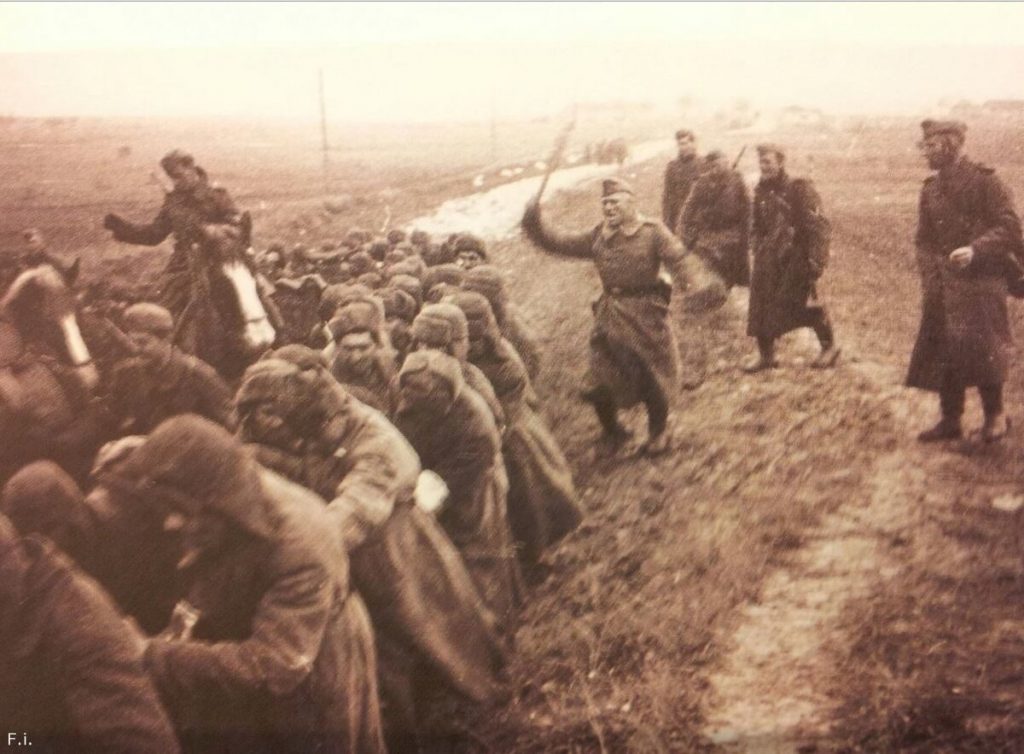
In addition to the daily exhausting physical labor, the plight of the prisoners of war was complicated by the extreme scarcity of food. So, by order of the Supreme Command of the Ground Forces dated October 8, 1941, the rate of Soviet prisoners of war for 28 days (as a percentage) compared to the rate of non-Soviet prisoners of war was (when used for heavy work) To restore working capacity, each prisoner of war received for 6 weeks: up to 100 grams of artificial honey per week, up to 50 grams of cod per week, up to 3.5 kg of potatoes per week. However, supplemental nutrition could only be obtained for 6 weeks. During the marches, prisoners of war died in the hundreds, both due to hunger and physical exhaustion, and as a result of executions during disobedience or attempts to escape.
Soviet prisoners of war died en masse in German prisoner-of-war camps, especially in the assembly camps in which they were held during the first period after their capture, from exhaustion as a result of poor nutrition; in addition, they were often deliberately destroyed. Striving for the mass destruction of Soviet prisoners of war, the authorities of Nazi Germany doomed Red Army soldiers to extinction from hunger and infectious diseases, without providing them with any medical care. So, for example, only on the territory of Poland, according to the data of the Polish authorities, 883 thousand 485 people are buried. Soviet prisoners of war who died in numerous Nazi camps
It has been established that the first mass extermination in a concentration camp with the use of toxic substances was the extermination of Soviet prisoners of war; only then this method was applied to exterminate the Jews.
The reasons for the large number of prisoners
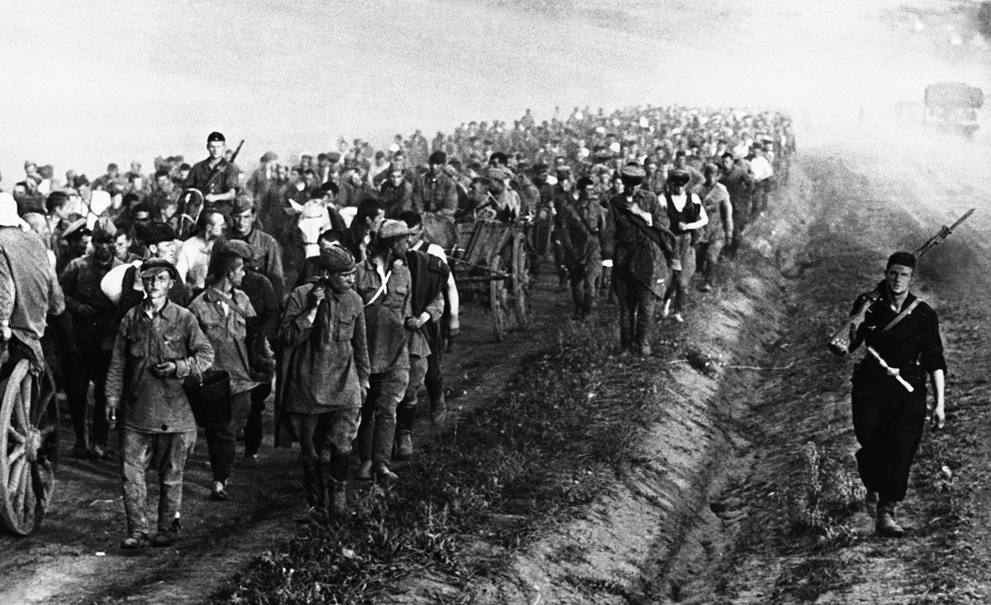
Military-strategic reasons: the unexpected attack of the Third Reich on the USSR, the difficult conditions of the war in which the soldiers of the Red Army found themselves (the overwhelming majority of the prisoners were captured in the so-called “big cauldrons”), led to the fact that large groups of units of the Red Army, having exhausted all the possibilities for resistance and deprived of any support from the command, they were taken prisoner.
The reasons for the shortage of the command staff of the Red Army and the inadequate level of training of the available personnel are the following: the civil war, which led to the mass emigration of the Russian officer corps ; removal from the Red Army so-called. ” Military experts ” in the late 1920s (see: Case “Vesna” ); Stalinist repressions in the Red Army in 1937-38; as well as the expansion of the army in 1939-41, as a result of which 70% of officers and 75% of political workers held positions for less than a year, more than 1 million Red Army soldiers served for less than a year, while the army tripled.
Large-scale repressions against the command of the Red Army were perceived by the potential enemy as weakening it. So, in 1937, the German magazine ” Verfront ” wrote about the repressions in the Red Army:
Socio-political reasons: the repressive policy of the Soviet state ( red terror, collectivization, Stalinist repressions ) caused significant discontent both among the population of the USSR, especially peasants, and among residents of the newly annexed territories ( Western Ukraine, the Baltic States ), who refused to provide armed resistance on the side USSR and who preferred to voluntarily surrender.
Subjective psychological factors: confusion, panic caused by the lack of adequate command and the apparent superiority of German troops in the first period of the war.
However, it should be borne in mind that the German command, in violation of the Hague and Geneva Conventions, included prisoners of war in addition to the actual personnel of the Red Army:
- all employees of party and Soviet bodies;
- men, regardless of age, retreating together with the retreating and leaving the encirclement of the troops;
- sometimes all men generally between the ages of 16 and 55;
- partisans and underground fighters;
- hostages taken in areas covered by the partisan movement.
For example, according to the German command east of Kiev, 665 thousand prisoners of war were taken, while by the beginning of the Kiev defensive operation there were 627 thousand personnel in the troops of the Southwestern Front, of which more than 150 thousand were operating outside the encirclement, and tens of thousands withdrew from surroundings. In Sevastopol, it was announced about the capture of 100 thousand prisoners of war. The English historian Fuller argued that “the German communiqués about victories cannot be trusted, for they often quoted astronomical figures”
The total number of Soviet prisoners of war in the foreign press is determined in the range of 5.2-5.75 million people. The Defense Ministry commission, chaired by M. A. Gareev, announced about 4 million. 1,836,562 people returned from captivity, of which about 1 million were sent for further military service; 600 thousand – to work in industry as part of workers’ battalions; 339 thousand (including 233.4 thousand former military personnel) – in the NKVD camps, as compromised themselves in captivity.
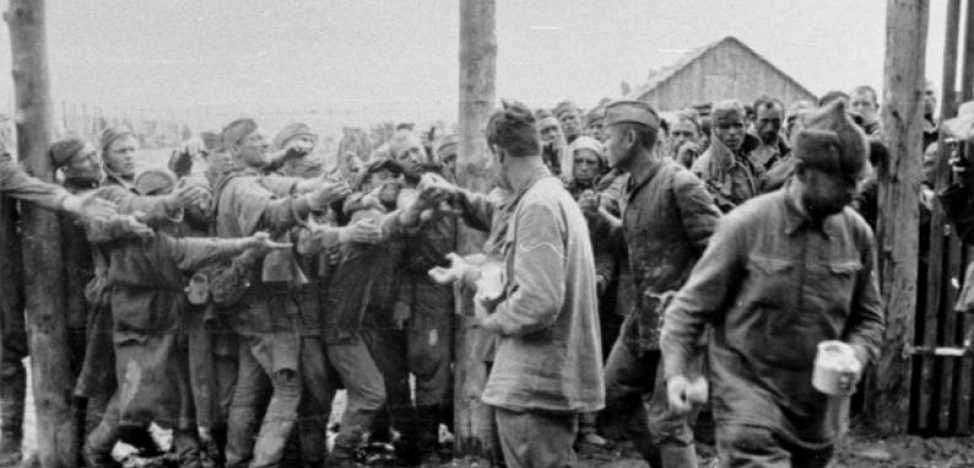 The attitude of the Germans towards prisoners of war
The attitude of the Germans towards prisoners of war
The main reason for the cruel attitude towards Soviet prisoners of war in captivity was the Nazi theory of the racial inferiority of the Slavs, in particular the Russians, who were perceived by the Nazis as “a mass of racially inferior, stupid people”.
The racial hatred of the Nazis was aggravated by the ideological rejection of communism. The Fuehrer, at a meeting of the highest command personnel of the Wehrmacht on March 30, 1941, said:
A communist has never been and never will be our comrade. It’s about the fight to destroy. If we do not look like that, then, although we will defeat the enemy, in 30 years the communist danger will again arise. Commissars and persons belonging to the GPU are criminals, and they should be treated like criminals.
Political commissars are the basis of Bolshevism in the Red Army, bearers of an ideology hostile to National Socialism, and cannot be recognized as soldiers. Therefore, after being captured, they must be shot.The directive of the Wehrmacht High Command (OKW) of May 14 demanded that ruthless measures be taken against the civilian population, and the Wehrmacht soldiers received complete exemption from responsibility for committing any violence. On June 6, two weeks before the start of the war, the OKW issued the ” Order on Commissars “:
Commissioners are not recognized as soldiers; no international legal protection applies to them.
After the sorting has been done, they must be destroyed.
Immediately after the outbreak of the war, this attitude spread to all Soviet prisoners of war. In particular, in the newsletter for troops No. 112, issued in June, it is said that ” It is necessary to eliminate the red subhumans, together with their Kremlin dictators.” All German commanders issued orders in the spirit of “the struggle of the Germans against the Slavs and protection from Jewish Bolshevism”. The OKW order of September 8, 1941 read:
Bolshevism is the mortal enemy of National Socialist Germany. For the first time, a German soldier faces an adversary trained not only in the soldier’s but also in the political sense in the spirit of Bolshevism. The struggle against National Socialism has become his flesh and blood. He leads it using any means: sabotage, subversive propaganda, arson, murder. Therefore, the Bolshevik soldier lost the right to treat him like a true soldier according to the Geneva Agreement.
The order of the OKW secret department for prisoners of war affairs “On the protection of Soviet prisoners of war” dated 09/08/1941 says about the use of weapons to suppress resistance, and also that it is necessary “to immediately shoot an escaping prisoner of war”, “all negotiations with prisoners of war are prohibited.” This order also states that Soviet prisoners of war are not entitled to treatment in accordance with the provisions of the Geneva Convention.
In practice, this resulted in the creation of unbearable conditions and in the physical destruction of exhausted prisoners of war who emerged from the boilers, even on the way to the place of detention in the camp:
Many fighters ended their lives in German captivity. The task of the Germans was to destroy the manpower of the USSR in general and prisoners of war in particular. Unbearable conditions were created for the existence of prisoners. On the way to the camp, they were not fed with anything. They ate cabbage leaves, roots, and rye ears from uncleaned roadside fields that they found along the way. They drank water from road puddles. It was strictly forbidden to stop at the wells or ask the peasants for a drink. So, for five days – from 9 to 13 October 1941 – they drove a column of prisoners to the Dorogobuzh camp. The convoy was accompanied by a vehicle on which four coaxial machine guns were installed. On the way in one of the villages, under the stove of a burnt house, the prisoners saw half-burnt potatoes. About 200 people rushed after her. Four machine guns opened fire directly into the crowd.Several dozen prisoners died. On the way, the prisoners rushed into the fields with un-dug potatoes, and machine guns immediately opened fire.
At the trial of fascist criminals in Kharkov, it was revealed that out of 15 thousand prisoners sent from the Vyazemsky camp to Smolensk, only 2 thousand people reached their destination.
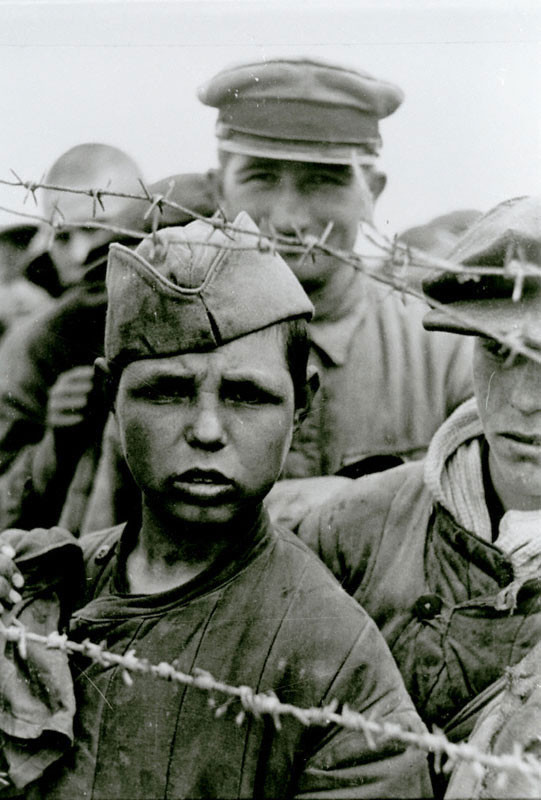
The question of international conventions
The Nazi leadership explained the plight of Soviet servicemen in Nazi captivity by the fact that the USSR did not recognize the Hague Convention of 1907 “On the Laws and Customs of War on Land” and did not sign the Geneva Convention of 1929, which determined the legal status of prisoners of war, although this convention was signed by 47 countries.
In fact, the Hague Convention was signed not by the USSR, but by the Russian Empire, and the Geneva Convention regulated relations with prisoners of war, regardless of whether their countries signed the convention or not.
The provisions of this Convention shall be respected by the High Contracting Parties in all circumstances.
If, in case of war, one of the belligerent parties turns out to be not a party to the convention, nevertheless, the provisions of such remain binding on all belligerents, signatories to the convention.
– Article 82. Convention relative to the Treatment of Prisoners of War.
On August 25, 1931, the People’s Commissar for Foreign Affairs MM Litvinov announced that the USSR was joining one of the conventions of the International Red Cross adopted in Geneva on July 27, 1929, and in particular: “On improving the condition of the wounded and sick prisoners of war”.
The main reason why the Soviet Union did not sign the 1929 Geneva Convention as a whole was disagreement with the division of prisoners along ethnic lines. The refusal of the USSR to sign the convention allowed the Nazis to use this fact and leave Soviet prisoners without any protection and control from the International Red Cross and other organizations that helped the prisoners of Western countries. At the Nuremberg trials, the Chief of Staff of the Wehrmacht Ground Forces F. Halder quoted Hitler as saying: “since the Russians do not recognize the Hague Convention, their prisoners of war should not be treated in accordance with the decisions of the Hague Convention”.
On July 17, 1941, the USSR, in a government note transmitted to Germany through Sweden, announced that it acceded to the Hague Convention, also subject to reciprocity. However, this note was rejected by Germany. Later, the Soviet Union twice, in a note by the People’s Commissariat for Foreign Affairs of the USSR dated November 25, 1941 and in a note by the People’s Commissariat for Foreign Affairs of April 27, 1942, declared the implementation of the principles of the Hague Convention in relation to German prisoners of war, at the same time accusing the German side of non-compliance with it. Moreover, the note dated April 27, 1942 said that the USSR had joined the Hague Convention de facto.
At the Nuremberg trials, the defense made a statement that the Geneva Convention allegedly did not apply to Soviet prisoners of war on the grounds that the USSR was not a party to this Convention. However, the International Military Tribunal dismissed the defense’s argument as untenable. At the same time, he pointed out that always and in all cases when treating prisoners of war, the general principles of international law should be applied: keeping in captivity should pursue only one goal – to prevent a prisoner of war from taking part in hostilities. Killing defenseless people or even inflicting some kind of harm on them out of revenge is contrary to the military tradition.
German POW camp system
Polygon Hebertshausen
The Hebertshausen Shooting Range with a total area of 85,000 m² was erected in 1937/1938 by SS troops just two kilometers from the Dachau concentration camp. In 1941 and 1942, as a result of the execution of the “ Order on the Commissars, ” a platoon of snipers responsible for the executions executed over 4,000 Soviet prisoners of war there – mostly officers, communist activists and Jews. All of them were previously “selected” from the concentration camps of Dachau, Hammelberg in Rhön, Nuremberg- Langwasser, Memmingen, Mosburg, as well as the military district of Stuttgart… The “selected” were brought to the Hebertshausen test site, where they were used as human targets. The dead were burnt in a crematorium on the territory of a concentration camp, and also partially in a crematorium in Munich.
After the war, the territory of the former shooting range passed into the possession of American troops and was later used as a training shooting range. Since 1997, the territory of the shooting range has been under the supervision of the State Center for Political and Educational Work and commemorative events have been held there. In 2014, the memorial complex of the Dachau concentration camp opened a renewed memorial site on the former site of the Hebertshausen test site. Currently, 816 names of Soviet prisoners of war who died in Hebertshausen are written on memorial plaques. In the long term, it is planned to find from 1500 to 2000 names.
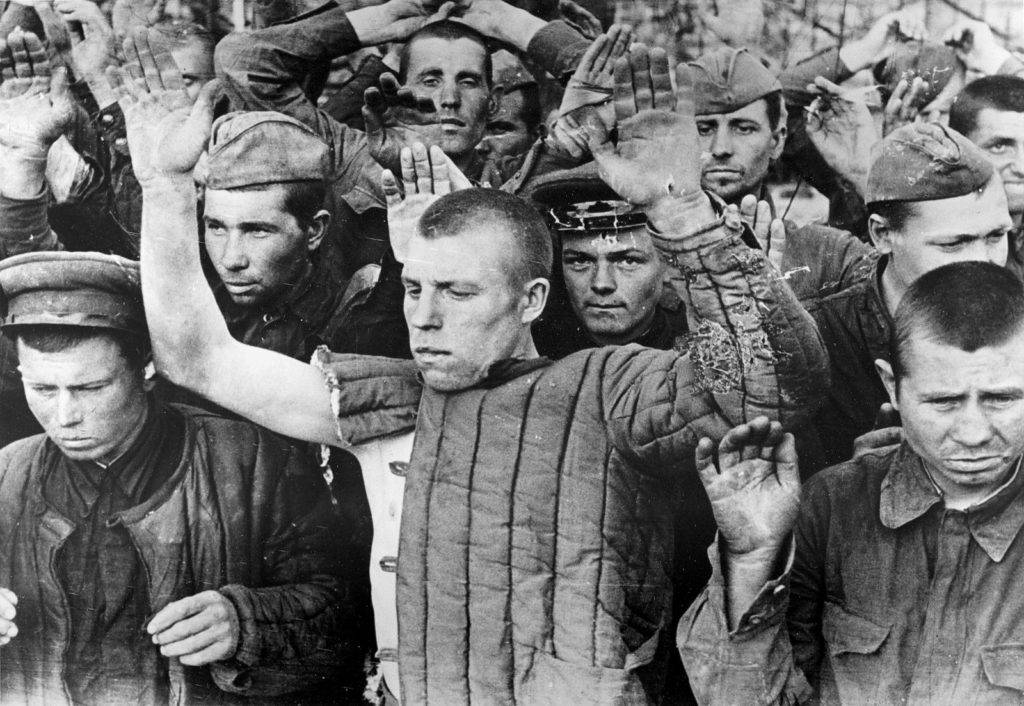
The use of prisoners of war in the war on the side of Germany
Walter Schellenberg wrote in his memoirs :
In the camps for prisoners of war, thousands of Russians were selected, who, after training, were thrown by parachute deep into Russian territory. Their main task, along with the transmission of current information, was the political corruption of the population and sabotage. Other groups were intended to fight the partisans, for which they were sent as our agents to the Russian partisans. In order to achieve success as soon as possible, we began to recruit volunteers from among the Russian prisoners of war right in the front line.
After the war: repatriation, filtration and amnesty
Even during the war, servicemen who had escaped from the encirclement and who had crossed the front line from among the civilian population, after filtration, were sent mainly to replenish rear units, in particular labor armies. These armies built military-industrial facilities, in particular the Kuibyshev Aviation Plant, etc.
To check “former Red Army servicemen who were in captivity and surrounded by the enemy”, a network of testing and filtration camps was created by the decree of the State Defense Committee of December 27, 1941. In 1942, in addition to the previously existing Yuzhsky special camp, 22 more camps were created in the Vologda, Tambov, Ryazan, Kursk, Voronezh and other regions. In practice, these special camps were high security military prisons, and for prisoners, who in the overwhelming majority did not commit any crimes.
In 1944, the flow of prisoners of war and repatriated returning to the Soviet Union increased sharply. In the summer of this year, a new system of filtering and screening by the state security authorities of all returnees was developed and then introduced.
In the spring and summer of 1945, a large number of repatriates accumulated at the check-filtration and collection-transfer points in Germany and other European countries, several times exceeding the throughput of these points.
Soviet and Russian military historian G.F.Krivosheev indicates the following figures based on NKVD data : of 1,836,562 soldiers who returned home from captivity, 233,400 people were convicted in connection with charges of cooperation with the enemy and were serving sentences in the GULAG system.
During the war, servicemen released from captivity in most cases, after a short check, were restored to military service, moreover, enlisted and non-commissioned personnel mainly in ordinary military units, and officers, as a rule, were deprived of their officer ranks, and from them officer assault (penalty) battalions were formed… In the post-war period, the released officers were sent to the NKVD camps and spare parts of the Red Army Glavupraform for a more thorough check.
After the war, the privates and sergeants released from captivity, who did not serve in the German army or traitorous formations, were divided into two large groups according to age – demobilized and non-demobilized age. In 1945, after the dismissal from the army to the reserve of the Red Army men of those ages who were subject to the demobilization order, ordinary and non-commissioned prisoners of war of the corresponding ages were also released to their homes. In accordance with a special decree of the State Defense Committee of August 18, 1945, prisoners of war of ordinary and non-commissioned officers of non-demobilized age were sent to workers’ battalions to work in industry and to restore objects destroyed during the war.The dispatch to the place of residence of those enrolled in workers’ battalions was made dependent on the future demobilization of conscripts of the corresponding ages from the army.
By the directive of the General Staff of the Armed Forces of the USSR of July 12, 1946, the workers’ battalions were disbanded, and the term “transferred to permanent cadres of industry” was applied to those enrolled in them. They did not have the right to change jobs and return to their homeland even after their peers were demobilized from the army.
In 1956, a massive review of the cases of convicted former prisoners of war took place. On the initiative of Georgy Zhukov, Minister of Justice Konstantin Gorshenin and Prosecutor General Roman Rudenko, a joint resolution of the Central Committee of the CPSU and the Council of Ministers of the USSR of June 29, 1956 “On elimination of the consequences of gross violations of the law in relation to former prisoners of war and their families” was issued.
Compensation from Germany
For a long time, the German authorities did not pay any compensation to Soviet prisoners of war. In 2015 alone, the Bundestag allocated 10 million euros in compensation to former Soviet prisoners of war in the German budget, hoping to give 4 thousand survivors to potential applicants for 2.5 thousand euros each. The compensation conditions are established by the Instruction of the German Ministry of Finance dated September 30, 2015:
- The recipients of the compensation are former Red Army servicemen taken prisoner by the Wehrmacht between June 22, 1941 and May 8, 1945;
- The amount of compensation is 2,500 euros for each prisoner of war who applied personally in the period from 20 May 2015 to 30 September 2017.
